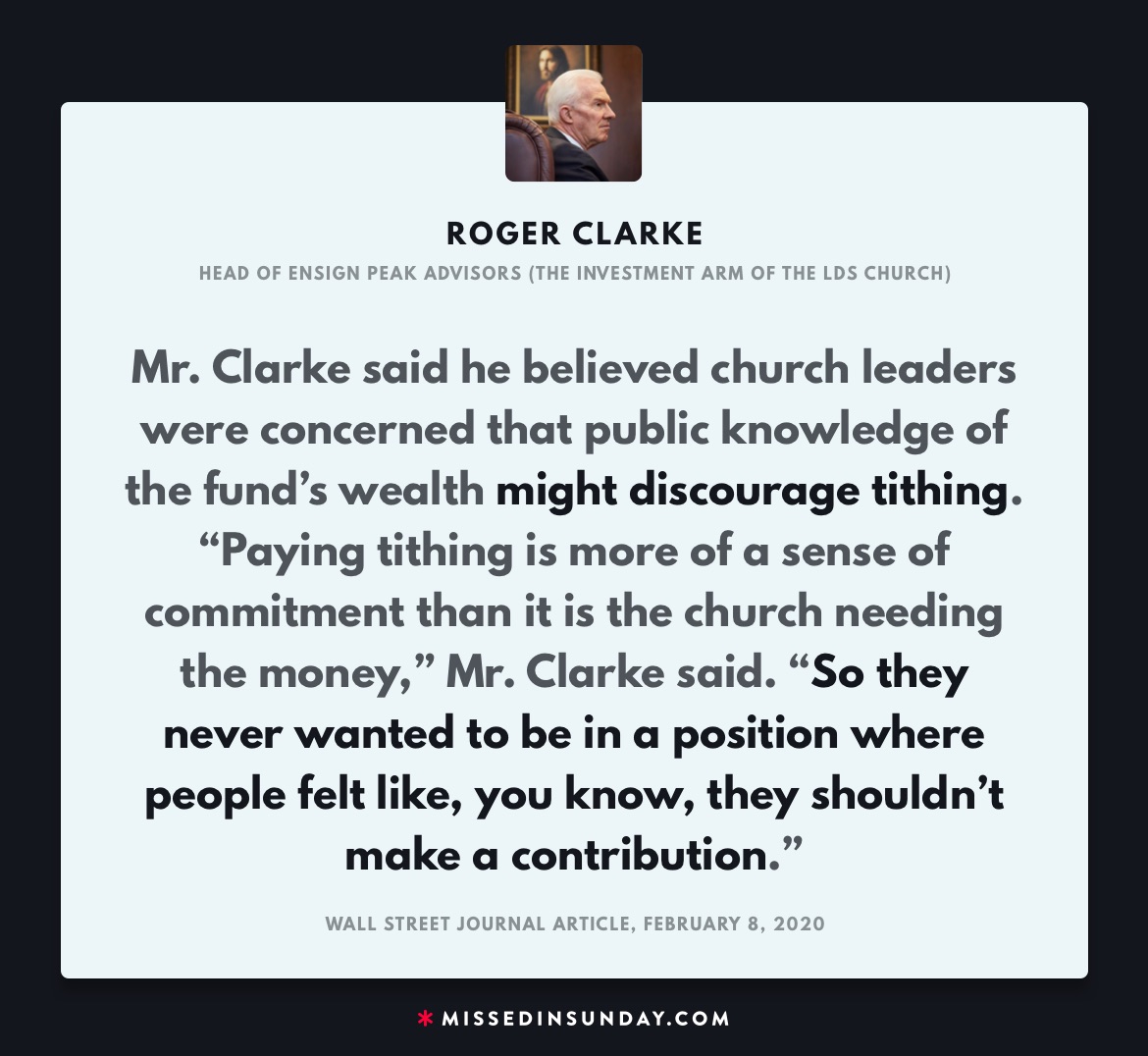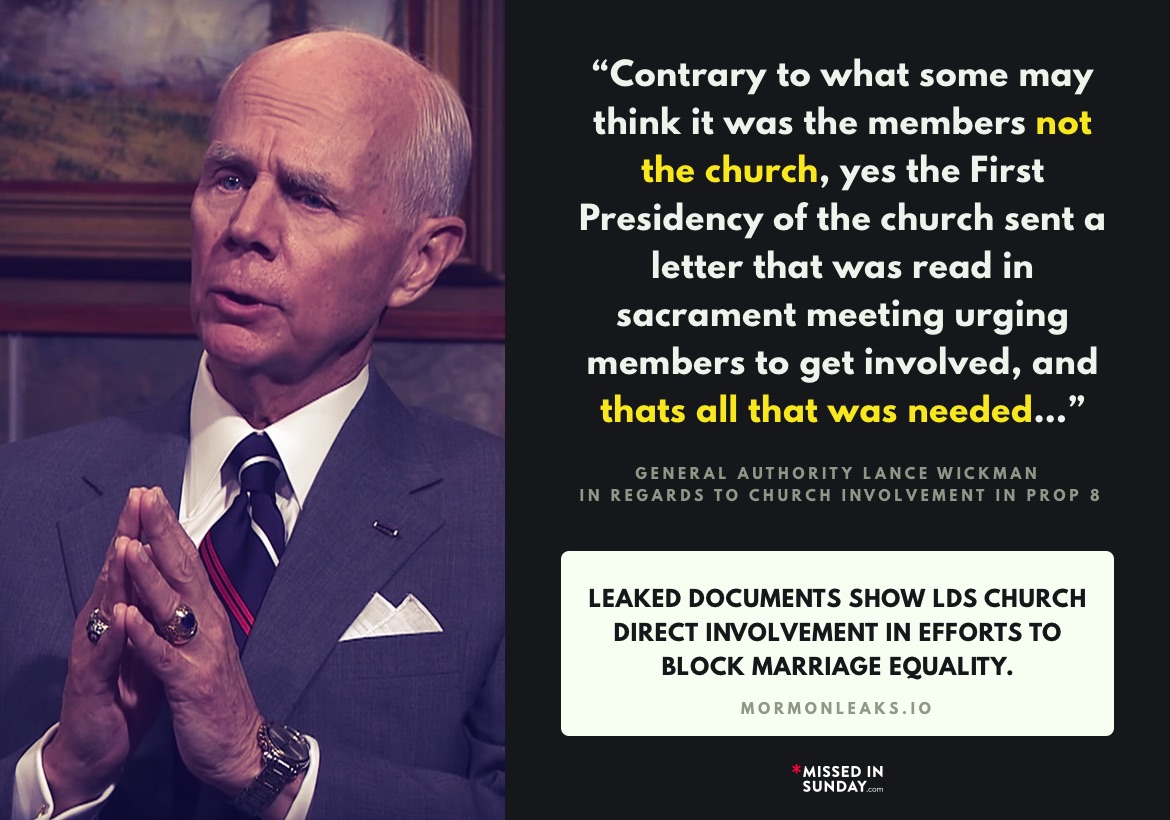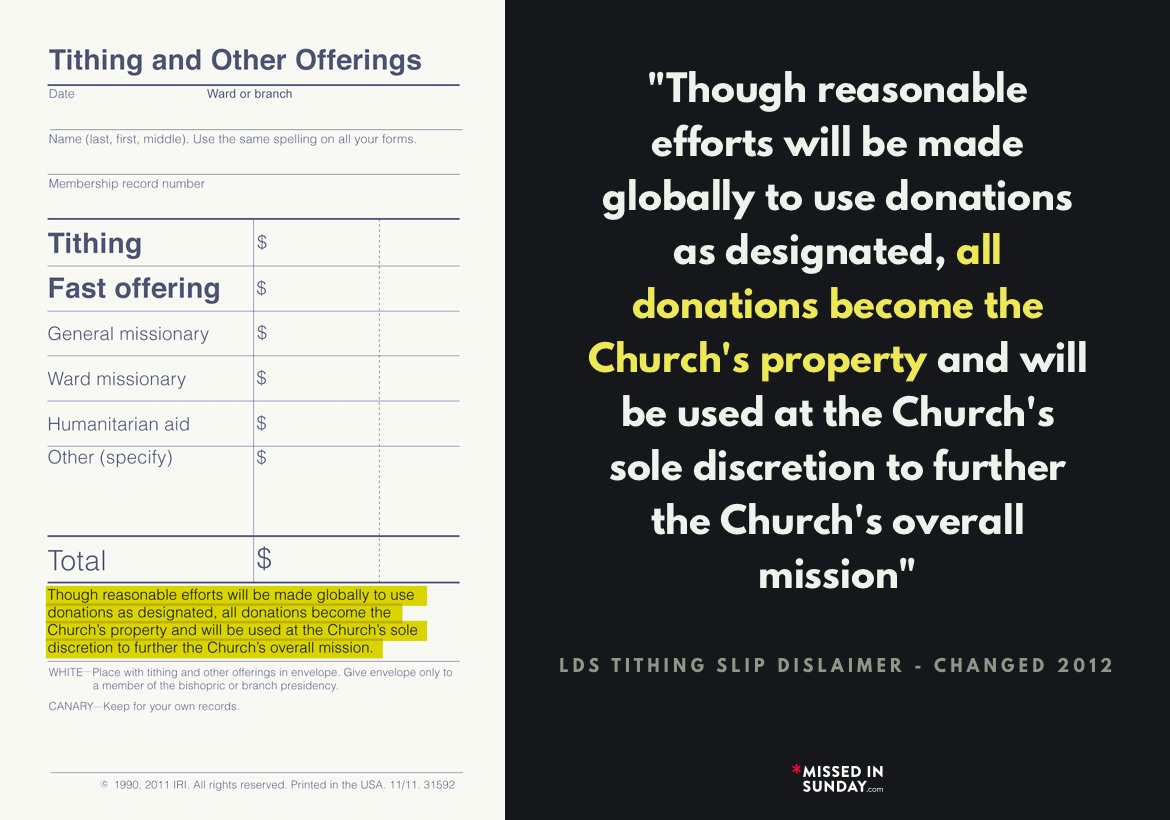Excerpt from the February 8, 2020 Wall Street Journal article, ’The Mormon Church Amassed $100 Billion. It Was the Best-Kept Secret in the Investment World.’:
For more than half a century, the Mormon Church quietly built one of the world’s largest investment funds. Almost no one outside the church knew about it.
Some of that mystery evaporated late last year when a former employee revealed in a whistleblower complaint with the Internal Revenue Service that the fund, called Ensign Peak Advisors, had stockpiled $100 billion. The whistleblower also alleged that the church had improperly used some Ensign Peak funds. Officials of the Church of Jesus Christ of Latter-day Saints, colloquially known as the Mormon Church, denied those claims.
They also declined to comment on how much money their investment fund controls. “We’ve tried to be somewhat anonymous,” Roger Clarke, the head of Ensign Peak, said from the firm’s fourth-floor office, above a Salt Lake City food court. Ensign Peak doesn’t appear in that building’s directory.
Interviews with more than a dozen former employees and business partners provide a deeper look inside an organization that ballooned from a shoestring operation in the 1990s into a behemoth rivaling Wall Street’s largest firms.
Its assets did total roughly $80 billion to $100 billion as of last year, some of the former employees said. That is at least double the size of Harvard University’s endowment and as large as the size of SoftBank’s Vision Fund, the world’s largest tech-investment fund. Its holdings include $40 billion of U.S. stock, timberland in the Florida panhandle and investments in prominent hedge funds such as Bridgewater Associates LP, according to some current and former fund employees.
Church officials acknowledged the size of the fund is a tightly held secret, which they said was because Ensign Peak depends on donations—known as tithing—from the church’s 16 million world-wide members. The church is under no legal obligation to publicly report its finances.
But the whistleblower report—filed by David Nielsen, a former Ensign Peak portfolio manager—has heaped pressure on the church to be more transparent about its finances, something the church has avoided for decades.
The firm doesn’t tell business partners how much money it manages, an unusual practice on Wall Street. Ensign Peak employees sign lifetime confidentiality agreements. Most current employees are no longer told the firm’s total assets under management, according to some of the former employees; few employees understand what the money is intended for.
In their first-ever interview about Ensign Peak’s operations, Mr. Clarke and church officials who oversee the firm said it was a rainy-day account to be used in difficult economic times. As the church continues to grow in poorer areas of the world like Africa, where members cannot donate as much, it will need Ensign Peak’s holdings to help fund basic operations, they said.
“We don’t know when the next 2008 is going to take place,” said Christopher Waddell, a member of the ecclesiastical arm that oversees Ensign Peak known as the presiding bishopric. Referring to the economic crash 12 years ago, he added, “If something like that were to happen again, we won’t have to stop missionary work.”
During the last financial crisis, they didn’t touch the reserves Ensign Peak had amassed, church officials said. Instead, the church cut the budget.
A former employee and the whistleblower in his report said they heard Mr. Clarke refer to the second coming of Jesus Christ as part of the reason for Ensign Peak’s existence. Mormons believe before Jesus returns, there will be a period of war and hardship.
Mr. Clarke said the employees must have misunderstood his meaning. “We believe at some point the savior will return. Nobody knows when,” he said.
When the second coming happens, “we don’t have any idea whether financial assets will have any value at all,” he added. “The issue is what happens before that, not at the second coming.”
Whereas university endowments generally subsidize operating costs with investment income, Ensign Peak does the opposite. Annual donations from the church’s members more than covers the church’s budget. The surplus goes to Ensign Peak. Members of the religion must give 10% of their income each year to remain in good standing.
Dean Davies, another member of the ecclesiastical arm that oversees Ensign Peak, said the church doesn’t publicly share its assets because “these funds are sacred” and “we don’t flaunt them for public review and critique.”
Mr. Clarke said he believed church leaders were concerned that public knowledge of the fund’s wealth might discourage tithing.
“Paying tithing is more of a sense of commitment than it is the church needing the money,” Mr. Clarke said. “So they never wanted to be in a position where people felt like, you know, they shouldn’t make a contribution.”





